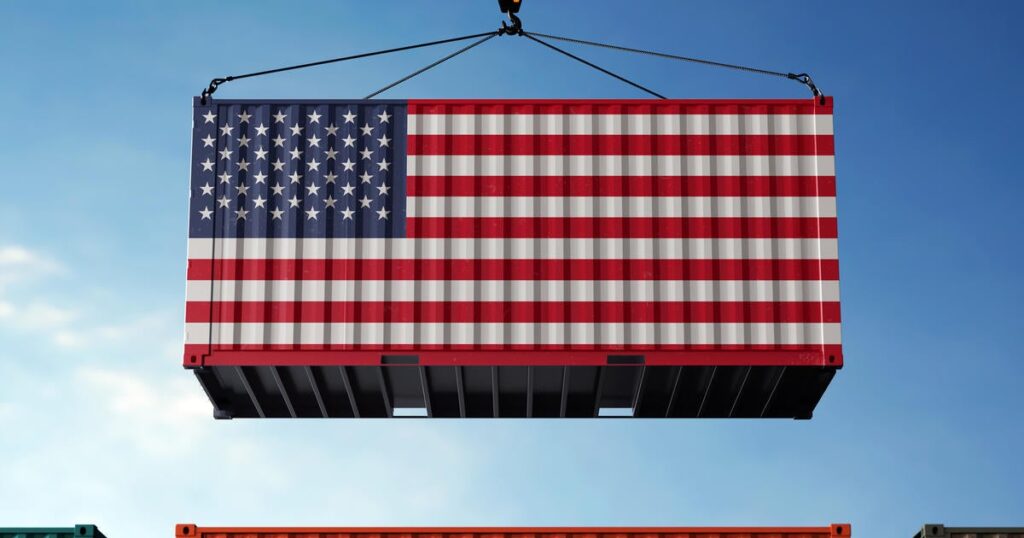Trump Implements New Tariffs on Major Trade Partners
President Trump has initiated a series of new import taxes targeting the United States’ primary trading allies. These measures, affecting Mexico, Canada, and China, mark a significant shift in the administration’s trade policy.
Favoring protectionist policies, Trump authorized a suite of new tariffs on Saturday, imposing duties on goods imported from these three countries. However, tariffs on Mexico and Canada were subsequently temporarily suspended for a month.
Understanding Tariffs and Their Impact
Tariffs, often criticized by economists, serve as a tool to control international trade and protect domestic industries from foreign competition. Essentially, they are taxes on imported goods. Contrary to popular belief, foreign producers do not bear the cost of these tariffs; instead, U.S. businesses importing these goods pay the taxes directly to the government, as highlighted by the Tax Foundation.
Typically, businesses pass some or all of these additional costs onto consumers. Proponents like Trump argue that tariffs encourage consumers to choose U.S.-made products and incentivize companies to establish manufacturing within the country.
“Come make your product in America,” Trump stated during the annual World Economic Forum in Davos, Switzerland. “But if you don’t make your product in America, which is your prerogative, then very simply you will have to pay a tariff.”
Economic Perspectives on Tariffs
The employment of tariffs has received mixed reviews from economists and trade experts. The Peterson Institute for International Economics criticizes tariffs for their “poor record” in revitalizing the manufacturing sector.
On Saturday, Trump enacted an executive order imposing a 25% tariff on imports from Canada and Mexico and an additional 10% on goods from China. In retaliation, Canada responded with its own tariffs, and Mexico announced plans to impose similar taxes on U.S. imports.
Subsequently, Trump announced via his Truth Social account that he would be pausing U.S. tariffs on Mexican imports for a month. This suspension followed Mexico’s agreement to deploy 10,000 troops to the U.S.-Mexico border to address issues related to fentanyl and migration. Tariffs on Canadian imports were also briefly halted.
Trump has hinted at the possibility of introducing further tariffs, including a general 10% tax on all imported goods. For more details on tariffs, continue reading below.
Defining Tariffs
Tariffs are taxes levied on goods brought into the U.S. The most prevalent type is the ad valorem tariff, which is a percentage-based tax on the value of the imported goods. These are the same tariffs Trump recently imposed, such as the 25% tax on items like avocados and lumber from Mexico and Canada.
Another form, “specific” tariffs, involves a fixed fee per unit of the imported good. For example, the U.S. might impose a $1 tariff on each imported Mexican avocado.
“Tariff-rate quotas” are yet another variant, where taxes are applied only after imports exceed a predetermined threshold. This approach was employed by the Trump administration in 2018 for washing machines, where the initial 1.2 million units were taxed at 20%, and any additional units faced a 50% duty, as reported by the Coalition for a Prosperous America.
Who Ultimately Pays Tariffs?
Importing businesses are responsible for remitting tariffs to the government. Entities like Walmart or Target pay these taxes to the U.S. Customs and Border Protection, which then allocates the funds to the General Fund of the United States.
Trump has asserted that foreign nations bear the cost of these duties, promising substantial revenue from foreign governments. However, economic experts argue that the financial burden primarily falls on American consumers, as large importers may transfer the costs onto consumers or adjust prices to remain competitive. Some businesses might also absorb the costs to avoid losing market share.
An estimate by financial services firm ING suggests that if Trump implements all proposed tariffs, the average U.S. consumer could face an annual increase of up to $2,400 in costs.
The Potential Inflationary Effects of Tariffs
Trump’s tariffs could significantly escalate the current U.S. tariff rate from 2.4% to 31%, reaching levels not seen since the late 19th century under President McKinley or during the Smoot-Hawley Tariff Act of the 1930s, according to Capital Economics.
Increased tariffs on Canada, Mexico could hike prices in the U.S.
04:16
Such a dramatic rise in tariffs is expected to drive inflation upward, potentially increasing the annual rate from approximately 2.9% to as high as 4%, far exceeding the Federal Reserve’s 2% target. This surge would mirror mid-2023 inflation levels, a period during which the Fed maintained high interest rates to curb rising prices.
“[I]mposing any of these suggested tariffs would generate a rebound in consumer price inflation this year, taking it further above target and making it harder for the Fed to resume loosening monetary policy,” Capital Economics stated in a report released on January 28.
Trump’s Rationale for Supporting Tariffs
The administration views tariffs as a means to achieve various policy objectives, including increasing government revenue and safeguarding domestic industries.
Trump and his allies, such as Treasury Secretary Scott Bessent, argue that previous tariffs did not significantly impact inflation because they were limited in scope. However, Capital Economics contends that these tariffs were insufficient to make a meaningful difference.
Additionally, Trump emphasizes the importance of boosting U.S. manufacturing capabilities. In an October interview with the Economic Club of Chicago, he stated, “No. 1 is for protection of the companies that we have here, and the new companies that will move in because we’re going to have thousands of companies coming into this country.”
While there is some evidence of job growth in specific sectors, such as the addition of 1,800 U.S. jobs at Whirlpool and other washing machine manufacturers noted by the Brookings Institution however, the overall impact on manufacturing jobs is minimal. During Trump’s first term, manufacturing employment declined slightly from approximately 12.4 million to 12.2 million workers, influenced by various factors including the pandemic and broader economic challenges.
